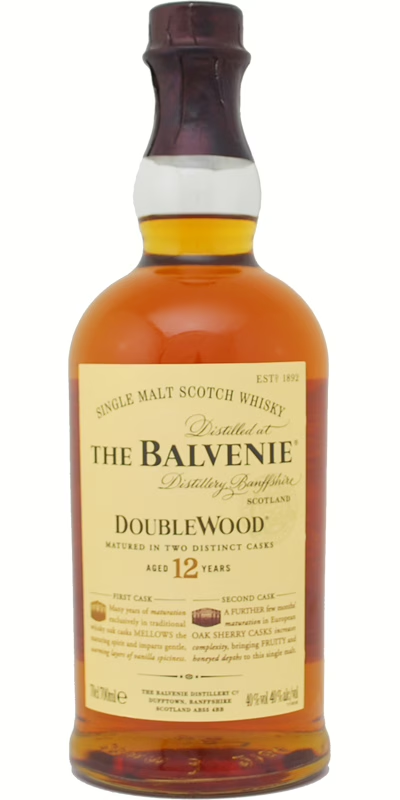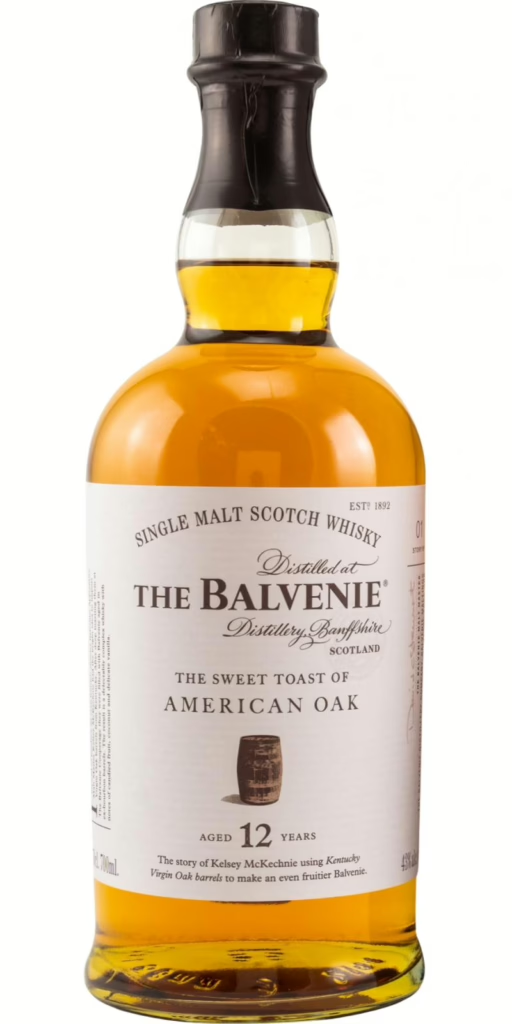The Balvenie Distillery was founded in 1892 by William Grant in Dufftown, Scotland, next to his already successful Glenfiddich distillery. Built during a period of whisky industry expansion, The Balvenie originally operated using repurposed stills from Lagavulin and Glen Albyn. Over the decades, it remained under the ownership of William Grant & Sons, a rarity in an industry where many distilleries changed hands multiple times. The Balvenie gradually established its reputation for traditional production methods, including in-house floor malting, long fermentation times, and direct oversight of cask aging. While it was initially less well-known than Glenfiddich, it developed a distinct identity, particularly with its focus on cask finishes and controlled aging. Today, it continues to operate with a mix of historical techniques and modern refinements, maintaining a direct lineage to its 19th-century roots. We review what is probably their best seller as well as another expression of the same age statement: the Balvenie 12-year-old Double Wood & American Oak.
Balvenie 12-year-old Double Wood Review
The Balvenie 12-Year-Old DoubleWood is a Speyside single malt whisky first released in 1993. It gets its name from its maturation process, which involves aging in two different types of casks: first in American oak ex-bourbon barrels, and then in European oak sherry casks. Bottled at 40% ABV, with additional colouring and chill filtration. Widely available, from €50 in Europe and around £50 in the UK.

Colour:
Chestnut, though artificially darkened with added colouring.
Nose:
Light and slightly winey, with notes of citrus (oranges and clementines), malt, and pastry. Hints of vanilla and honey emerge alongside subtle pepper, menthol, and herbal tones.
Palate:
A malty start with a touch of bitterness, followed by citrus, peach, and pear. Digestive biscuits and honey add some sweetness. Despite the 40% ABV and chill filtering, the texture is acceptable—though it could have been better.
Finish:
Pepper and ginger spice lead into dry oak, with a medium-length warmth.
Comments:
This is a straightforward and approachable whisky, yet there’s enough complexity to keep it interesting. While the nose is quite subdued, the palate offers more than expected. The sherry influence is subtle, and despite the chill filtration, the texture holds up better than anticipated. A more expressive nose could have pushed it to a 6, but for now, 5.5/10 feels like a fair rating for this Balvenie 12-Year-Old DoubleWood.
Rating: 5.5/10
Balvenie 12-year-old The Sweet Toast of American Oak Review
The Balvenie 12-Year-Old “The Sweet Toast of American Oak” is part of the distillery’s Stories range, which highlights unique production techniques and experiments. This expression is initially aged in traditional American oak barrels before being finished in virgin American oak casks that were heavily toasted at the distillery’s cooperage. This expression is bottled at a slightly higher 43% ABV, but still with chill filtration and additional colouring. About £55/€65.

Colour:
Burnished, though artificially darkened with added colouring.
Nose:
Honey, vanilla, toasted bread, and charred wood, with a hint of freshly pressed orange juice. Despite the slightly higher ABV, the aromas remain somewhat restrained.
Palate:
More prominent oak influence with its accompanying spices—pepper and a touch of salted caramel. Citrus notes of lime, grapefruit, and orange zest add brightness. Unfortunately, the virgin oak brings coconut. The mouthfeel is decent, though still affected by chill filtration.
Finish:
Lingering toasted wood, a hint of citrus, and a subtle note of old, dusty books.
Comments:
This Balvenie 12-Year-Old “The Sweet Toast of American Oak” carries a stronger bourbon-like character due to the virgin oak finish. However, it’s hard not to wonder if it might have been better without it.